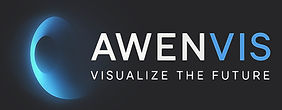How to Create a Virtual Tour? Step-by-Step Guide
A 3D virtual tour is a modern form of spatial presentation that allows viewers to navigate interiors, buildings, or developments as if they were physically there. It’s a tool that has revolutionized real estate marketing, interior design, tourism, education, and even e-commerce.
But how exactly is a virtual tour created? What are the steps involved, and what does it consist of?
What is a virtual tour?
A virtual tour (also called a 360° tour or 3D tour) is an interactive presentation created using panoramic photos or 3D models. Users can “look around” the entire experience, move between rooms, click on information points, view multimedia, and even make selections within the interface.
Depending on the technology, the walk can be:
- based on 360° photographs,
- built on the basis of a 3D model,
- or be a combination of both forms.
How to Create a Virtual Tour? Step-by-Step Steps
1. Choosing the form of the walk: photos or 3D model?
First, you need to decide whether the walk will be based on:
- real 360° photos (e.g. for an existing facility),
- or 3D visualization (for properties under construction or conceptual designs).
For developers, architects and interior designers, a 3D walkthrough is usually more effective, as it can be created before the investment is implemented.
2. Preparation of materials
To create a virtual tour you will need:
- floor plans and floor plans (for 3D models),
- arrangement and finishing designs,
- finishing materials, colors, furniture – everything that is to be included in the space,
- or 360° photos if we are dealing with a real interior.
3. Modeling and arrangement (in the case of 3D)
- If we are creating a virtual tour based on visualization, the next step is:
- creating a 3D model of the interior,
- furnishing it, adding lighting and details,
- preparing camera points from which you can “look around”.
4. Combining views in the walking system
Once we’ve prepared our panoramas (whether in 3D or from 360° photos), it’s time to combine them into an interactive tour. We use specialized platforms and software, such as:
- Matterport,
- 3DVista,
- Pano2VR,
- Unreal Engine (for 3D walkthroughs),
- or your own web solutions.
In this step the following is added:
- navigation points (arrows for passages between rooms),
- interactive hotspots (with descriptions, photos, videos, apartment plans),
- menu, maps, navigation,
- and extended functions – such as changing interior finishes, VR mode or distance measurement.
5. Optimization and online publishing
The finished walkthrough is optimized for:
- loading speed,
- compatibility with devices (computers, tablets, smartphones),
- browsers and integration with your website.
We then publish the tour as a link or embedded element on the website, available to customers 24/7.
What does a virtual tour give you?
✅ Realistic and engaging experience – the client explores the space themselves.
✅ Increased conversion – users spend more time on the website and make decisions more easily.
✅ Modern presentation – the investment or product looks professional and innovative.
✅ Online availability – no need for physical presence, at any time.
✅ Distinction from the competition – especially for developers and architects.
Who are virtual tours created for?
- Real estate developers – for presenting apartments and investments.
- Architects and interior designers – as a tool for communication with the client.
- Real estate agencies – for showing existing premises.
- E-commerce and manufacturers – for showrooms and exhibitions.
- Hotels and restaurants – for online interior presentations.
- Education and culture – e.g. walks through museums, schools, galleries.
Summary
Creating a virtual tour is a process that combines technology, 3D graphics, and a functional interface. The result is an interactive, modern presentation that effectively supports sales and communication. Depending on your needs, it can be based on 360° photos, a 3D model, or even incorporate augmented reality.
